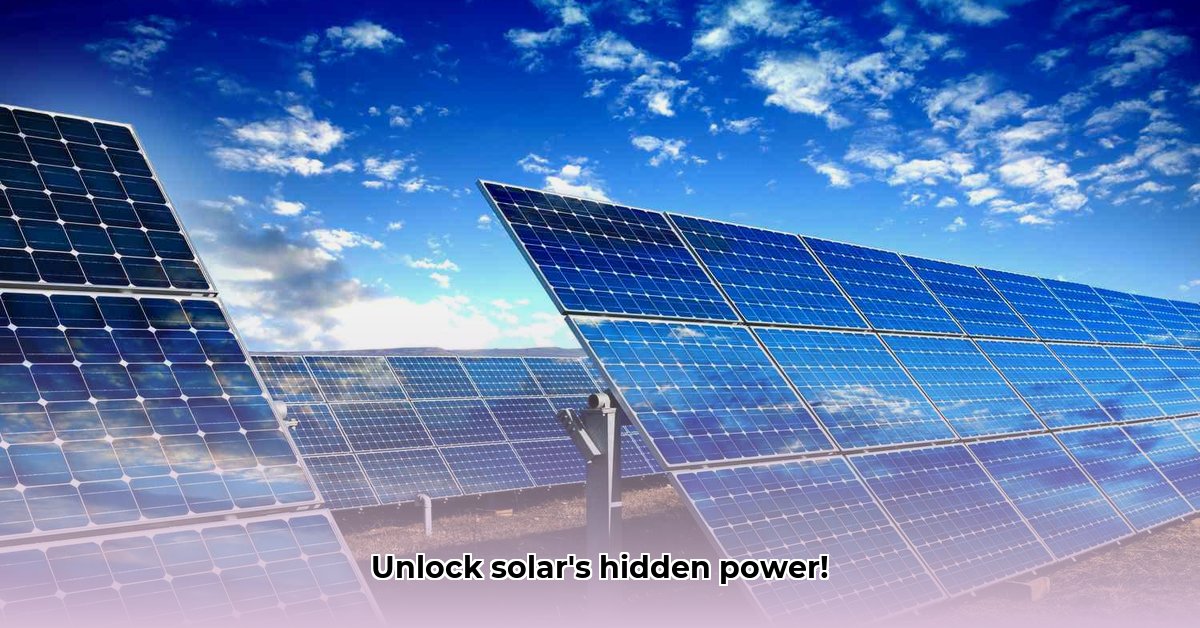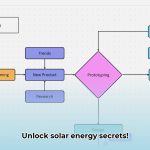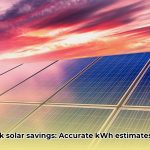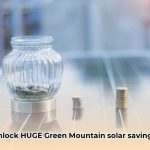Harness the full potential of your solar panels with our expert guide. We’ll demystify the science behind solar energy, offering practical strategies to maximize power output from every square inch of your system. Whether you’re a solar novice or an experienced user, this step-by-step plan will help you optimize your investment and unlock the maximum energy from the sun. We’ll explore everything from sunlight fundamentals to advanced performance enhancements, ensuring your solar system works as hard as possible for you. For daily energy output estimates, check out this helpful resource: [daily solar energy], or see our daily solar production estimates here.
Understanding Solar Energy Per Square Meter: Maximizing Solar Potential
Let’s explore how to capture and convert the maximum amount of solar energy using your panels. Solar energy per square meter is the cornerstone of an efficient system. The sun is an abundant energy source, and with the right knowledge, you can effectively channel that power to your home or business. How can understanding the interplay of these elements lead to optimal energy independence and grid stability?
The Science of Sunlight and Electricity: Essential Factors
The electricity generated by solar panels is influenced by multiple factors, not just sunlight availability. Location is paramount. A panel in sun-drenched Nevada will outperform one in overcast Michigan. Panel type also matters. Some panels are inherently more efficient at converting sunlight into electricity. Regular maintenance, like cleaning dust, can significantly boost energy output. Did you know that atmospheric conditions, such as humidity and air pollution, can also impact solar energy production?
Selecting High-Efficiency Solar Panels: A Comparative Analysis
Efficiency, the ability to convert sunlight into electricity, varies across different solar panels. Monocrystalline panels are typically the most efficient, with conversion rates ranging from 15% to 22%. These panels are pricier but deliver more power per square meter. Polycrystalline panels offer a balance of cost and efficiency, with conversion rates between 12% and 15%. Thin-film panels are the least efficient, ranging from 7% to 14%, but their flexibility and ease of installation can be advantageous in certain scenarios.
Selection depends on balancing your budget with your energy output goals. If maximizing power per square meter is critical, monocrystalline panels are the best choice. For a more budget-conscious approach, polycrystalline panels are a viable alternative. What are other emerging solar panel technologies, and how do they improve efficiency?
Practical Tips for Boosting Solar Energy Performance
Ready to optimize your solar setup? Here’s a practical guide to boosting performance:
-
Optimal Panel Placement: In the Northern Hemisphere, position your panels on a south-facing surface to maximize sunlight exposure. Angle is crucial. Align panels to optimally track the sun’s path throughout the day. A professional installer can help you determine the perfect angle for your location. What role do digital tools play in identifying panel placement?
-
Eliminate Shading: Shadows cast by trees, buildings, or other obstructions can drastically reduce sunlight reaching your panels. Conduct a site assessment to identify potential shading issues. Consider pruning trees or removing obstructions to maximize sun exposure. Partial shading can diminish overall panel output. How can you use drone technology to identify shading?
-
Regular Cleaning: Dust, pollen, bird droppings, and other debris can accumulate on your panels, reducing their ability to absorb sunlight. Regular cleaning is essential. Frequency depends on your environment. A simple rinse with a hose is often sufficient. What eco-friendly cleaning solutions are available?
-
Optimize Ventilation: Solar panels operate less efficiently at high temperatures. Maintaining good ventilation around your panels helps dissipate heat and improve performance. Ensure adequate airflow around your panels. Are there benefits to integrating solar panel systems with green roofing?
-
Monitor System Performance: Monitor your system’s performance using integrated monitoring tools. Early detection of issues like damage or reduced output can prevent costly repairs and ensure optimal energy production. What key performance indicators should you observe when monitoring your solar panel system?
Regional Sunlight Variations: Adapting to Local Conditions
Solar potential is geographically dependent. Regions with consistently sunny weather have higher solar irradiance levels than those with frequent cloud cover. Before making a solar investment, research irradiance levels specific to your area. Consult local utility companies or online resources for accurate data. What actions can communities take to improve solar energy equity?
Advanced Strategies for Solar Maximization
Beyond the basics, explore these advanced strategies:
- Government Incentives: Take advantage of available tax credits, rebates, and grants to reduce the cost of solar installation.
- Energy Management Systems: Implement smart energy management systems to optimize energy use and maximize the benefits of your solar panels.
- Battery Storage: Integrate battery storage to store excess solar energy for use during cloudy days or at night.
What impact do government policies and subsidies have on the adoption?
Comparative Analysis of Solar Panel Types
| Panel Type | Efficiency Range (%) | Typical Power Output (Watts/m²) | Advantages | Disadvantages |
|---|---|---|---|---|
| Monocrystalline | 15-22 | 180-250+ | Highest efficiency, long lifespan | Most expensive |
| Polycrystalline | 12-15 | 150-200 | Balance of cost and efficiency | Lower efficiency, shorter lifespan |
| Thin-Film | 7-14 | 100-150 | Flexible, lightweight, lower cost potential | Lowest efficiency, least durable, larger area needed |
Maximizing solar energy per square meter requires careful consideration of various factors, including technology advancements. By understanding these aspects, you can create a solar system that meets your needs, saves you money, and promotes environmental sustainability.
Tailoring Solar Panel Energy Output to Varied Climates
Key Takeaways:
- Panel selection is critical for optimal energy yield.
- Panel orientation is vital.
- Consistent cleaning is a must.
Maximizing solar panel energy output per square meter in diverse climates requires a strategic, customized approach.
The Energy Output Equation: Simplified
The key to maximizing solar energy per square meter lies in optimizing these factors within the equation: Energy output equals panel area multiplied by solar irradiance, multiplied by panel efficiency. To maximize energy production, we need to optimize each factor. How does this equation serve as a blueprint for maximizing solar energy?
Selecting Solar Panels Suited to Various Climate Conditions
High-efficiency panels may have a higher upfront cost, but they deliver better long-term returns. Monocrystalline silicon panels outperform polycrystalline alternatives. Also, check the panel’s temperature coefficient. A lower coefficient signifies less efficiency loss in hot environments. How can you research the optimal temperature coefficient?
Optimizing Panel Tilt and Orientation for Sunlight Capture
Panel angle significantly affects sunlight absorption. In how to maximize solar panel energy output per square meter in different climates settings, it involves adjusting panel tilt to align with sunlight. A fixed tilt adjusted for your latitude is a good start. Dual-axis tracking systems offer superior energy optimization. These systems continuously adjust panel orientation to track the sun. How does the cost of trackers influence ROI?
Cleaning and Maintenance for Solar Panel Systems
Debris can significantly reduce energy generation. Frequency depends on where you live. Arid environments require frequent cleaning. Snowy regions require snow removal. Self-cleaning panels minimize maintenance. What types of monitoring systems are available?
Tailoring Strategies for Unique Climates
- Hot Climates: High temperatures reduce panel efficiency. Use panels with low temperature coefficients. Increase ventilation. Use reflective surfaces.
- Cold Climates: Snow blocks energy production. Install panels at an angle to facilitate snow shedding. Regular snow removal is useful.
- Arid Climates: Dust requires cleaning. Use panels with anti-reflective coatings.
- Cloudy Climates: Panel output will differ.
Technologies that Maximize
Micro-inverters optimize harvesting from each panel. AI-powered trackers precisely track the sun. Although expensive, the technology can pay off in the long run. To what extent can systems like AI produce more energy?
Long-Term Panel Preservation
Expect efficiency degradation over time. Account for degradation in your plans. How can degradation be minimized?
Precise Solar Panel Placement for Higher Performance
Key Takeaways:
- South-facing placement maximizes energy capture.
- Shading must be controlled.
- Panel tilt angle needs to be just right.
To achieve maximum output in diverse climates, carefully plan your system.
The Effects of Climate on Effectiveness
You need to understand your climate. It’s like planting a garden. Sunlight patterns, cloud cover, and snowfall can have an effect. Data is key to predicting the system’s output. How does sunlight data help?
Placement: Solar Panel Sweet Spot
A south-facing orientation means strong energy capture. Can the sun be effectively harnessed? The sun’s angle changes throughout the day, influencing the best results.
Angle
The angle balances sunlight during peak summer with energy during winter. Match the tilt angle to your latitude. A nuanced approach can improve performance. Experimentation can yield amazing results. What is the impact of these adjustments?
The Blocking Nature of Shading
Shading can reduce output. Even a small tree can cause problems. A permanent block affects performance. Planning helps performance. How does planning have a positive impact?
Tech Factors and Tips
Monocrystalline panels do well. Crystalline structures are important. This leads to more energy conversion. Budget is key. How does the budget influence performance?
Meeting Energy Needs
Estimate your needs. Undersizing hinders savings. Oversizing adds costs. Optimizing solar panel placement for maximum output in diverse climates depends on knowing how much energy you need. How can meeting demands aid consumers?
Sustaining Solar
Your panels need maintenance. Cleaning is important. Dirt reduces efficiency. Professional care helps energy production. How does professional care sustain panel performance?
Optimization
Harness light by capitalizing on reflection. Harness more energy. Microinverters improve performance. Can harnessing help sustainability?
Efficient Solar Power System Design Under Sun Level Changes
Want every bit of energy? Know how to grab energy even when sun strength varies. Irradiance is always changing. Being aware of these fluctuations matters.
Knowledge of Sunlight’s Power on Solar Panels
Think of solar panels like plants. High sun strength means great energy. Low sun strength means less. But good design keeps output stable. What impact does that have?
The sun’s angle changes every day. Angle is vital. Fixed mounts might lose energy. Tracking helps. Solar Energy System Design for Optimal Performance Under Varying Irradiance Conditions means picking right.
Maximizing Panel Place
Place panels right for maximum energy. Think about:
- Shade: Avoid trees blocking panels
- Direction: Face panels south
- Angle: Match angle to sunlight
Boosting How a System Works
Boost your system with the tips below:
- Spectral Filtering: Filters help panels capture good sunlight
- Cooling: Cooling systems boost panel output
- Modeling: Simulations boost panel efficiency
Check and Use Well
Good systems need good checks. Check for dirt and damage. Real time data helps solve issues.
Key Points:
- Panel location and angle matter
- Filters help
- Checks boost output
Good Solar Energy System Design for Optimal Performance Under Varying Irradiance Conditions means knowing place and sunlight.
- Hydro Extrusion USA LLC Provides Extensive Custom Aluminum Extrusion - December 29, 2025
- Hydro Extrusions USA Leads North American Aluminum Profile Solutions - December 28, 2025
- Hydro North America Leads Aluminum Extrusion Solutions Across Diverse Industries - December 27, 2025
















